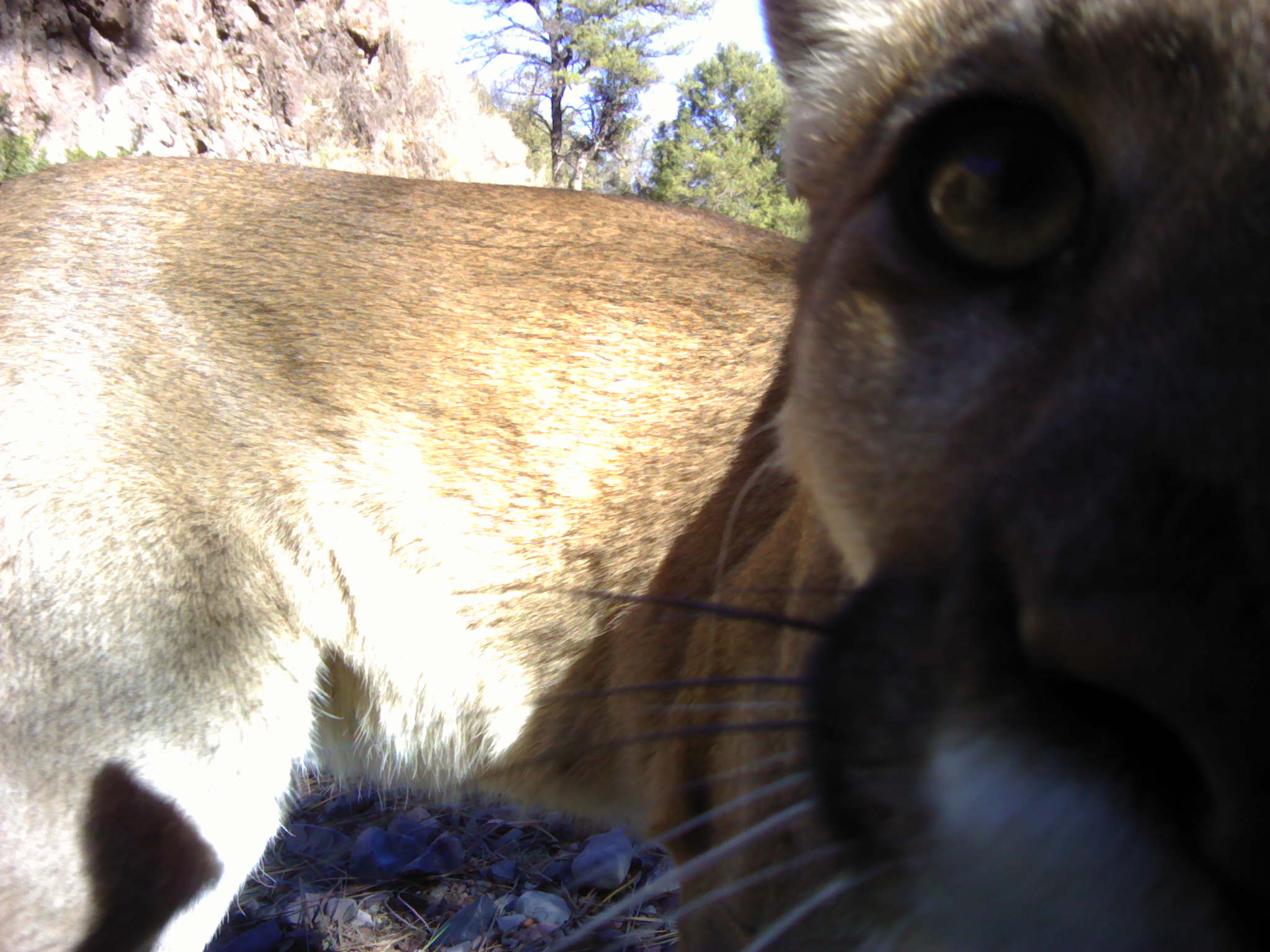Methods
Summary
GPS technology has opened many doors to conducting more accurate and detailed research of wild animals than ever before. We have fitted pumas and wolves with GPS collars that send location information via satellite to our computers. When a study animal is in one location for an extended period of time it shows up as a cluster of points on our map. Very often this means that the animal is eating, which is how we will learn what prey species pumas and wolves are relying on in this region. Each cluster of points is investigated on the ground to record data. Additionally, when we think an animal may return to a carcass, we place cameras to take a up close and personal peek into their elusive lives like this:
Using the GPS data, we can also see if two study animals are close to one another, or even potentially sharing or stealing food from each other. We do not yet know how Mexican gray wolves and pumas interact when sharing the same landscape, but we have already observed some cool interactions and are very excited about what we will see in the next few years!
Because so much is unknown about these two species in the region, we will collect additional data and conduct analyses throughout the project whenever given the opportunity.
Challenges
There are many challenges in any wildlife project because the animals we research are, well, wild! In addition to the more typical project challenges like permitting, funding, and unexpected events regarding study animals, we are working in a very different setting than a project in the US.
Unlike the US, Mexico does not have many large parks or public lands. Therefore, all of our research will be conducted on private property with the permission of the owners. This is not an easy feat, especially since there are potentially hundreds of people we need to speak with and maintain relationships with. Also, this region is very reliant on cattle ranching and just like in the US, there is a very large proportion of livestock producers who are anti-predator until they learn more about the species. One of our biggest challenges, but also arguably the most important goal is to aid, educate, and learn from and with ranchers in order for humans, livestock and predators to co-exist on this still very wild and beautiful landscape.
Protocols
This project has not yet shared any protocols.
